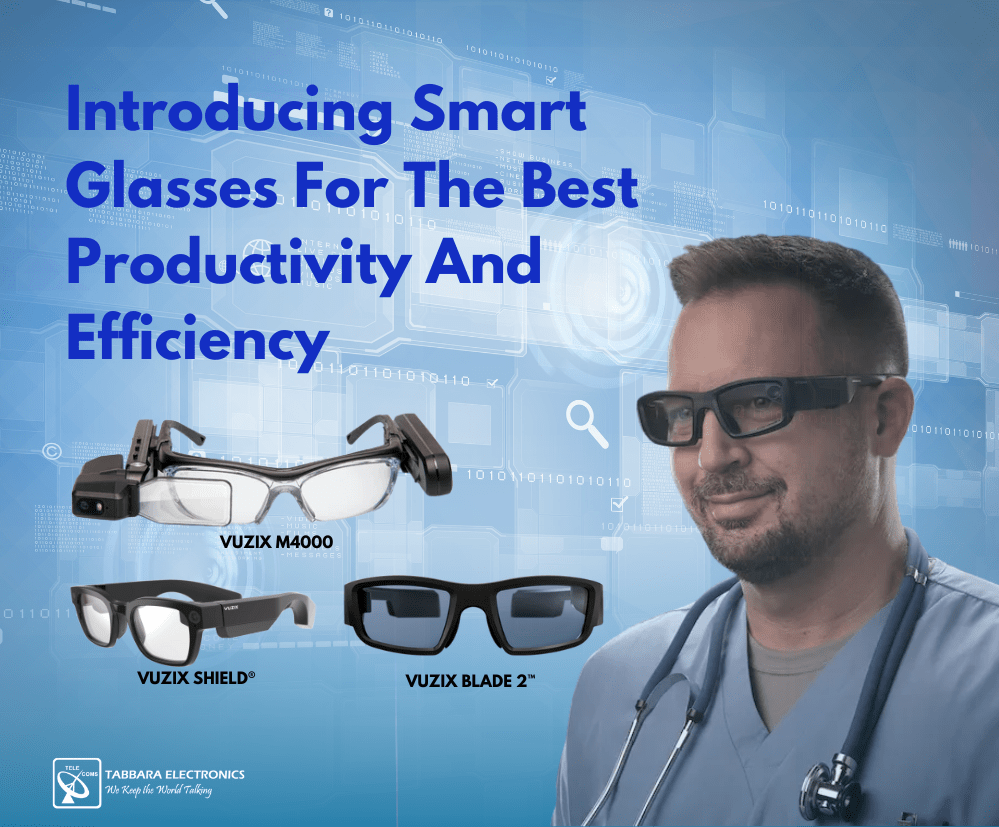
 Introduction
Introduction
In today’s fast-paced and competitive world, businesses and industries are constantly seeking ways to increase productivity and efficiency. One of the latest technologies that have emerged to meet this need is smart glasses. These innovative devices have the potential to revolutionize the way we work and significantly improve productivity in various industries
What are Smart Glasses and How Do They Work?
Smart glasses, also known as augmented reality glasses, are wearable devices that incorporate a small display screen, a camera, speakers, and a microphone to provide users with a hands-free computing experience. They work by projecting digital images and information onto the user’s field of view in real-time, allowing them to interact with and manipulate the virtual objects as if they were physical.
The technology behind smart glasses based on augmented reality (AR), which is a form of technology that enhances the user’s real-world environment with computer-generated graphics, sounds, and haptic feedback. The glasses use sensors such as cameras, gyroscopes, and accelerometers to detect the user’s movements and orientation, while the display screen and speakers provide the visual and audio output.
Some of the most popular smart glasses available in the market today include Google Glass, Microsoft HoloLens, and Vuzix Blade. These devices have different features and capabilities, but they all share the same goal of providing users with a seamless and immersive computing experience.
How Can Smart Glasses Improve Productivity in Different Industries?
Smart glasses are rapidly emerging as a game-changing technology that has the potential to revolutionize productivity in different industries. From manufacturing and logistics to healthcare and education, companies to boost efficiency and productivity in various ways are adopting smart glasses. In this blog post, we will explore how smart glasses can improve productivity in different industries and the benefits they offer to businesses.
The smart glasses provide hands-free access to information, allowing workers to perform tasks more efficiently. In manufacturing and logistics industries, workers can use smart glasses to access information about inventory, product assembly, and shipping details without having to stop what they ‘are doing to check a computer or mobile device. This improves productivity by reducing the time needed to complete tasks and minimizing errors caused by manual data entry.
The Benefits of Smart Glasses for Hazardous Environments
Smart glasses offer several benefits when it comes to hazardous environments. These high-tech glasses can provide workers with real-time information, without requiring them to take their eyes off the job at hand. Additionally, smart glasses can reduce the need for bulky equipment and minimize the risk of accidents in dangerous work environments.
Overall, the benefits of smart glasses in hazardous environments are clear. They can enhance productivity, improve safety, and provide workers with valuable information and support. As smart glasses continue to evolve and become more advance, they are likely to play an increasingly important role in a variety of industries where safety and productivity are paramount.
Overcoming Challenges and Barriers to Adopting Smart Glasses
In this section, you can discuss some of the challenges and barriers to adopting smart glasses in different industries. You can talk about issues such as cost, privacy concerns, and the need for training and support for workers. You can also provide some tips and strategies for overcoming these challenges.
The use of smart glasses has been growing in various industries due to their potential to improve productivity and efficiency. However, there are challenges and barriers to their adoption that need to be address. In this blog post, we will explore the challenges and barriers faced by organizations when adopting smart glasses, as well as potential solutions to overcome them. By understanding these challenges and solutions, organizations can successfully integrate smart glasses into their operations and reap the benefits they offer.
Conclusion:
In conclusion, you can summarize the key points of the article and emphasize the importance of smart glasses in improving productivity and efficiency in any industry. You can also provide some final thoughts and recommendations for businesses and industries considering the adoption of smart glasses.
Thanks for reading! If you found this post informative and want to learn more about Smart Glasses for remote operations, let us connect on LinkedIn. We would be happy to answer any questions you have and discuss how we can help your business stay connected no matter where you operate.
Please let me know if you need further assistance!
Critical Communications
Dispatchers
Passive Components
Emergency & Crisis Response
Wireless Broadband
Satellite Communications
Unmanned aerial vehicle
Surveillance & ACC
Power Solutions
AR Products
Entreprise Products
